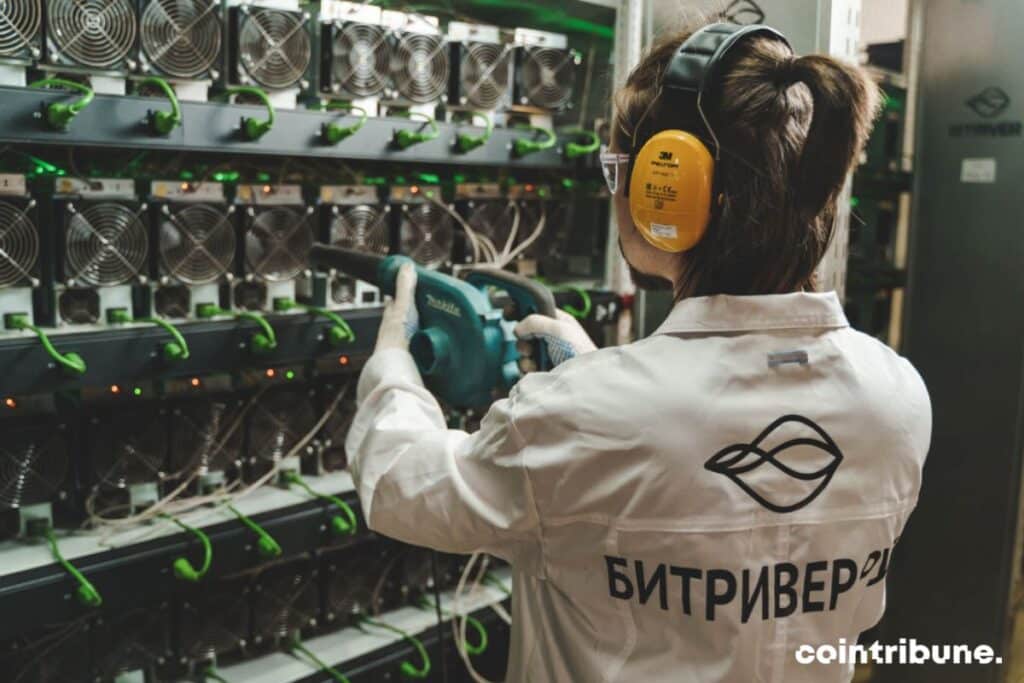The biggest #bitcoin mining countries are:
— Jaran Mellerud 🟧⛏️🇳🇴 (@JMellerud) February 16, 2024
1) 🇺🇸 40%
2) 🇨🇳 15%
3) 🇷🇺 12%
Notably, there is relatively little hashrate in Africa and Latin America. This will change over the next 1-2 years. pic.twitter.com/JQDnDehnWr
A
A
Bitcoin Mining - Russia soon to be the world's number 2
Tue 20 Feb 2024 ▪
6
min read ▪ by
Getting informed
▪
Mining
Russian bitcoin miners account for 12% of the global hashrate and are on track to double their Chinese counterparts.

New Exodus of Miners After the Halving?
With the block reward dropping from 6.250 to 3.125 bitcoins, the halving will slash miners’ margins in half. Those using old ASIC models will have to unplug everything.
Indeed, by the end of 2023, eight relatively recent ASIC models were responsible for more than 70% of the hashrate. This is according to the latest report from Galaxy Digital that cites Coin Metrics data.
The analysis suggests that 15 to 20% of the hashrate (86-115 EH/s) comes from old models that will no longer be profitable post halving. The CEO of Cleanspark anticipates a collapse of 30%. Almost all the old models like Bitmain’s S9 and MicroBT’s M32 will be out of the race.
Unless they benefit from almost free electricity, only the recent ASICs such as Antminers S19 and S21 will remain profitable. This generation of ASICs represented more than half of the hashrate by the end of 2023.
However, the report anticipates that a portion of the less efficient ASICs will move to regions with more favorable energy prices. It is currently in the Middle East, South America, Bhutan, and Russia that growth is becoming stronger.
So much so that despite the decommissioning of many ASICs, Galaxy Digital still sees the hashrate reaching 700 EH/s by the end of the year. We are currently around 535 EH/s. Potentially, that’s an increase of 30%, with a good portion coming from Russia.
The Siberian Bitcoin Industry
Analyst Jaran Mellerud estimates that 40% of the hashrate comes from the United States, 15% from China, and 12% from Russia.
These figures are approximate, but likely close to the truth. In Russia, the miner Bitriver is among the global giants with 15 sites comprising over 175,000 ASICs and consuming more than 520 megawatts. Knowing that each site can provide more than one gigawatt of electricity…
The Russian miner will inaugurate a new 100 MW site before June. Located in the Far Eastern state of Buryatia, near Lake Baikal, the complex will host 120 technicians who will manage more than 30,000 ASICs.
And just like Texas, which goes the extra mile to attract miners, the KRDV (Russian Corporation for the Development of the Far East and Arctic) has made things easier.
“Bitriver benefits from numerous forms of government support. No property tax. No ownership tax. Insurance premiums reduced to 7.6% and a reduced income tax rate,” said Dmitry Khameruev, director of the KRDV in Buryatia, according to a statement.
“After connecting Bitriver’s facility to the national power grid, the electricity rate will be halved for citizens,” he added.
Just over a year ago, Bitriver B2G director Oleg Ogienko explained that Russian miners were already consuming 1.7 Gigawatts. “Given the potential for growth, we will reach 5 GW before 2025. Russia will then be the world’s second-largest,” he announced.
Knowing that Texas miners consume 2 GW and that we are around 18 GW at the global level.
The Race for Efficiency
The expansion of the bitcoin industry in Russia is observed through the hashrate. This has soared by 104% in 2023 after increases of 46%, 30%, and 35% in 2022, 2021, and 2020.
Last year, public miners (primarily Americans) purchased over 94 EH/s of ASICs worth $1.5 billion. Spending has already reached nearly $400 million since the beginning of the year.
These purchases primarily include the latest generation of ASICs with efficiencies below 20 J/TH. This includes Bitmain’s S21/T21 and MicroBT’s M66/M56.
Therefore, the Galaxy Digital report provides very interesting tables to guess at a glance if it is worthwhile to mine in your area.
The table below shows the minimum threshold for the cost of electricity (dollars per megawatt-hour) based on different combinations of efficiency and hashprice.
The hashprice corresponds to what each TH/s produces in a day’s earnings (in dollars). It is currently at $0.083 and will fall to around $0.045 after the halving. An S19j Pro miner (30 J/TH) will then need a kWh below $0.063 to achieve a positive gross margin.
Miners of the S19 or M30S type (~25 J/TH) will need a kWh below $0.054. In contrast, the S21 (17.5 J/TH) will stay afloat under $0.095. It’s $0.08 for the S19 XP (21 J/TH).
Needless to say, mining in France with the EDF rate (€0.20 per kWh) will unfortunately no longer be an option. Even if practicing overclocking with an S21 in immersion.
Unless perhaps the hashrate stabilizes and bitcoin climbs above $100,000…
Maximize your Cointribune experience with our "Read to Earn" program! For every article you read, earn points and access exclusive rewards. Sign up now and start earning benefits.
A
A
Bitcoin, geopolitical, economic and energy journalist.
DISCLAIMER
The views, thoughts, and opinions expressed in this article belong solely to the author, and should not be taken as investment advice. Do your own research before taking any investment decisions.